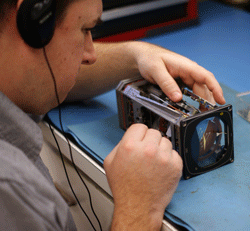Contributed by Bob Tooker, Propeller Sales and Tech Rep

Example of a severely over-greased propeller.
As a part of regular maintenance, aircraft propellers require periodic greasing. The frequency depends on the propeller model and application.
Before you begin to grease the propellers yourself, always review the manufacturer owner’s manual on proper procedures. If you aren’t familiar with these guidelines, it is easy to over-grease your propeller, potentially causing the following consequences.
1. Overspeed Propeller
In extreme situations, the propeller can rotate beyond its designed limit. Overspeed conditions can greatly reduce the life of your propeller and engine and in extreme cases lead to catastrophic failure.
2. Leaking Blade Seal
Over-greasing a propeller may cause grease to bypass the blade-to-hub seal or the clamp parting line gaskets, leading to excessive leaking.
3. Excessive Vibration
An over-greased propeller can become out-of-balance causing excessive vibration and unnecessary wear on the engine and propeller.
Duncan Aviation's propeller shop provides extensive propeller maintenance and overhaul services, and we hold OEM Authorizations for Raisbeck and Hartzell propellers. We also maintain a large inventory of business aircraft parts for sale.
Bob Tooker is an aircraft parts consignment expert specializing in quality control and export documentation. His aviation career began in 1967.








